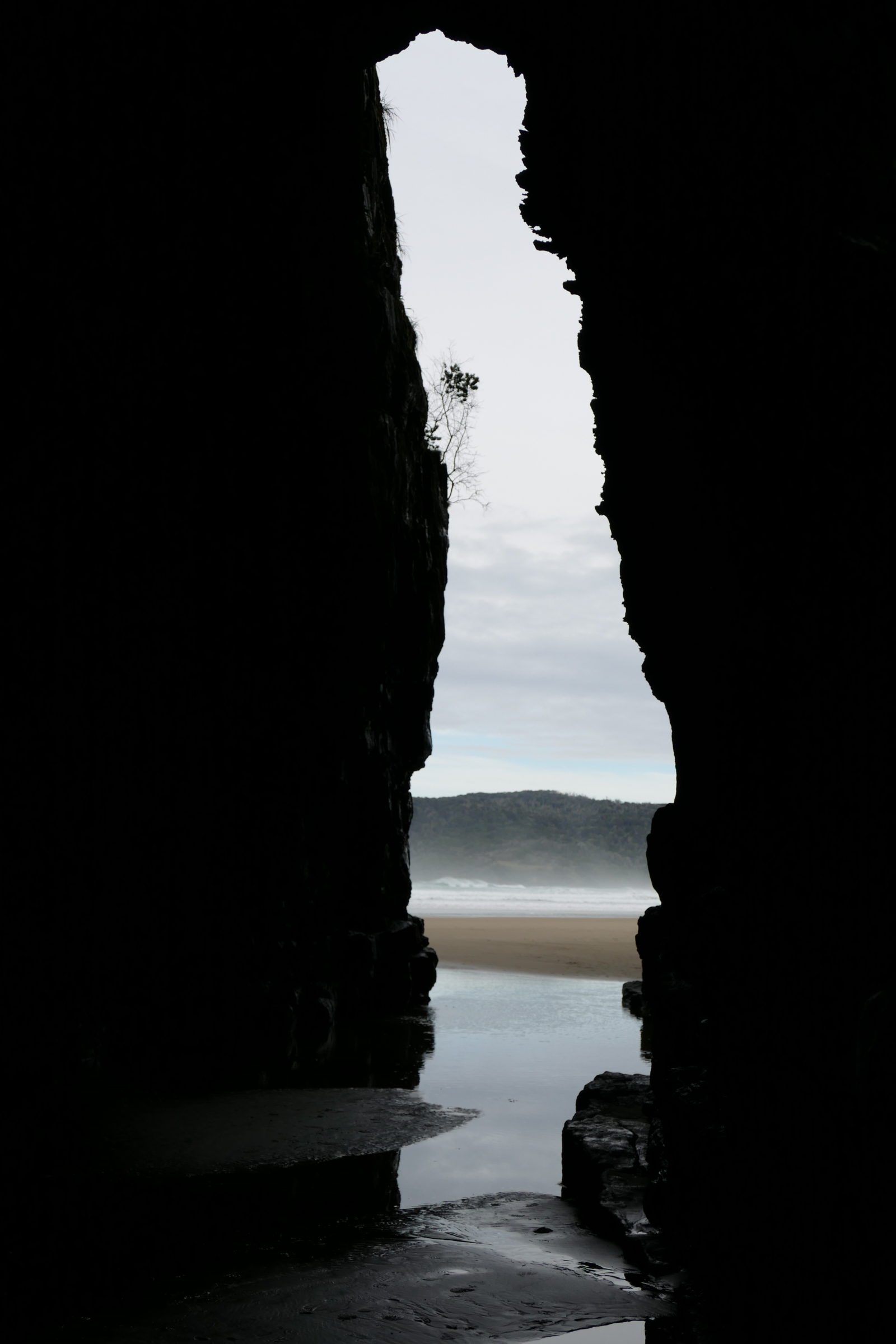A particular pleasure in the intertidal zone: seeing and experiencing – even entering – wonderful things that are only available to you at low tide, or at certain very low tides…
The photo was taken from inside a sea cave, looking out to a typically wild beach on the Catlins Coast, in southeastern-most South Island, NZ.
The kelp pictured in the immediately preceding post was growing just outside the cave’s “front door” – a “door” which is always open, but oft-flooded.
Had my beloved and I arrived a few hours earlier or later, the higher tide would have completely submerged the kelp (probably, rendering it invisible as well as inaccessible to us) and we would not have been able to walk into the cave.
There will be more episodes of this “Intertidal Zone” series, but for the next little while Pelican Yoga will mostly incline to the southwest Australian winter, as experienced in the “wild” West, and in “the world’s most isolated substantial city”.
Footnote:
By almost whatever reasonable measure. Perth is not actually the most isolated metropolis.
Aloha Honolulu, kia ora Auckland.
If the criterion is “distance to next city that also has a population of more than 500,000”, Honolulu is more “remote”. If the population measure is “more than one million”, Auckland is more remote. Raise the bar to two million residents, and Perth probably does “win”.
In any event, Perth has many international, interstate and intrastate flights arriving and departing each day, plus excellent roads to and from it.
Not a few other cities are much more truly-isolated than is Perth – getting to/from many African and South American cities is a much more arduous affair than is reaching or departing Perth.
…and Perth is much closer to where most of “our” planet’s fellow humans live than are Sydney, Canberra, Melbourne, Brisbane….
(photo is copyright Doug Spencer, taken at 10.15 am, 21 April 2015)
